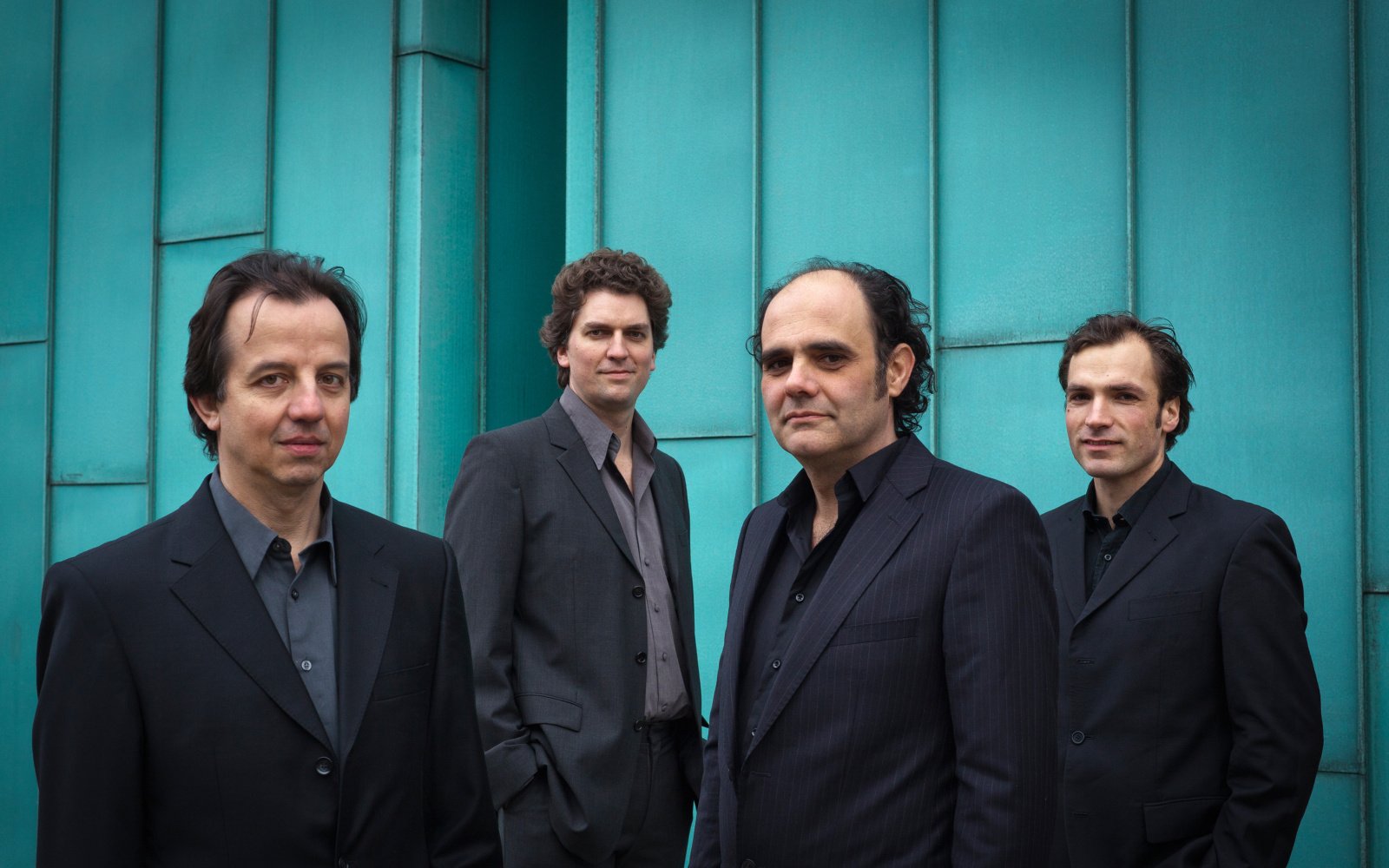ALEPH Guitar Quartet
Fri, March 11, 2022 8:00 pm CET
- Location
- Online
The ALEPH Guitar Quartet performs three pieces and surprises the online audience with a very special musical experience.
A binaurally miked guest sits acoustically ideally positioned to the musicians of the ALEPH Guitar Quartet. The microphones are located in the ears of one of the concert attendees. The individual anatomy determines what digital recipients will hear.
Technically, the process is similar to recording with an artificial head. This is characterized by a precise spatial directional mapping. In contrast to the standardized auricles of the artificial head, however, in this case the very individual ear characteristics of the guest become important. This becomes particularly evident when listening to the concert by using headphones, which are highly recommended for an optimal listening experience.
Ludger Brümmer also conducts discussions with the composers.
Tracks
-
Irene Galindo Quero »Ziffer H Hut«, (2011), for 4 guitars, 10’
It was the quiet experience of literature that first brought me to writing music. The apparent similarities of the two fields fascinated me from the beginning. Especially when moving on the borderline between coexistence and contradiction of certain concepts: literary or musical metrics, emphasis or syntax – the always same is not the same at all.
»Ziffer H Hut«: when the ALEPH guitar quartet asked me to write a piece, I was just dealing with various aspects that carry minimal units, meaning and structural potential, but do not yet contain the completed aura of the finished work. Out of this came »Ziffer H Hut«. I imagined, for example, that one would find the sign 'h' in an archaeological excavation of an unknown society, or in some everyday situation, such as on a banal crumpled piece of paper at a bus stop. I was fascinated by this variety of possible interpretations of the sign in combination with the difficulty of looking at already assimilated signs in a different way.
Three interpretations were particularly important to me: it's a number, but it could also be the remainder of a script, and this sign could also simply be a drawing that either represents something (a hat) or not. The piece takes different paths that illuminate metrical, linguistic, or structural aspects. I was very interested in the question of the culturally-influenced approach to perception on a tonal level. How can the principle of a plucked string produce such a rich palette of music? When does this gesture of plucking turn toward the koto, flamenco guitar, oud, or sarod and take shape? In my mind’s eye, I did not see four guitars but just this one string which represents both, a yet to emerge instrument and remains of bygone one - construction and deterioratio barely distinguishable.
Author: Irene Galindo Quero
-
Bernhard Lang »GAME 8-4-4 Loops for ALEPH«, (2020), for 2 guitars, steel guitar, bass guitar and amplification, 10‘
After the first collaboration with the ALEPH guitar quartet for »Cold Trip Pt.1« (Berlin, New York, Graz, Karlsruhe, Elbphilharmonie Hamburg, etc.), a new work is now on the way, which wants to break completely different and new grounds: »GAME 8-4-4 Loops for ALEPH« for four guitars and amplification. The amplification concept is taken from »Cold-Trip Pt.1« and was developed at the ZKM | Hertz-Lab. The »GAME« series emerged from the »SCAN« experiments of Klangforum Wien, which wanted to combine and explore experiences of free improvisational music with open structures of New Music. It draws on Roman Habenstock-Ramatis' conception of the mobile on the one hand, and on Christian Wolffe's idea of semi-improvisational, open composition on the other. This no longer exists here as a fixed score, but just in part books.
The eighth piece of the new »GAME« series now explores the possibility of playing and toying with musical structures and interactions: By introducing indeterminacy, uncertainty and spontaneous decisions, the score is opened up as a determinant. The piece is organized in rounds that proceed canonically: Musicians choose from shuffled sets of cards, following a set of rules that determine the structure and course of each round. The players' choices are interdependent and mutually conditional. The resulting form of the play remains variable in many aspects from performance to performance. Self-organization of the system is the goal and the means of these strategies. Sonically, the new piece explores the possibilities of the contemporary guitar, with a focus on multiphonics and extended harmonics.
»GAME 8-4-4 Loops for ALEPH« is organized completely microtonally. The used microtonal scordaturas are intended to make this possible. The piece also provides for a spatialized variant of the 4 guitars.
Author: Bernhard Lang
The work is a commission by the ALEPH Guitar Quartet. -
Peter Jakober »triften«, (2007), for 4 guitars and electronics
In »triften«, the methodology of pulse superimposition which has already been applied in several of my pieces is continued and more sophisticated. My main interest is to question the phenomenon of simultaneity in music. Bringing sound to a seemingly impossible simultaneity, its achievement and its inevitable disruption in space is the chief motive around which a multi layered sonic space is clamped. The different tempo overlays result in the partial extinction of the basic pulse which leads to a rushing and driving sound event.
Author: Peter Jakober
Team
ZKM | Hertz-Labor
Ludger Brümmer (Artistic director)
Dominik Kautz (Production manager)
Sebastian Schottke (Sound director)
Jakob Schreiber (Assistant sound director)
Hans Gass (Light & event technician)
ZKM | Video Studio
Christina Zartmann (Head of ZKM | Video Studio)
Moritz Büchner (Technical director ZKM | Video Studio)
Andy Koch (Scene editor)
Peter Müller & Audric Dette (Camera)
ZKM | Communication & Marketing
Tanja Binder (Head of ZKM | Communication & Marketing)
Samira Kaiser, Ida Kammerer, Svenja Liebig, Anouk Widmann (Homepage & communication)
Organizing Organization / Institution
Sponsors
Funded by the Aventis Foundation and the Cultural Office of the City of Karlsruhe
-
Sponsored by


